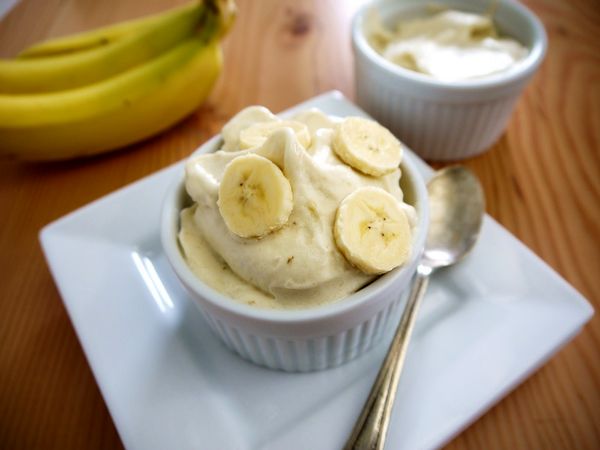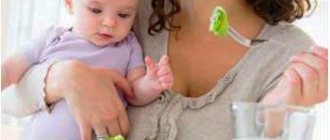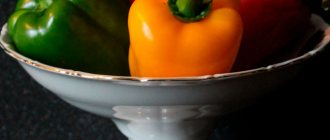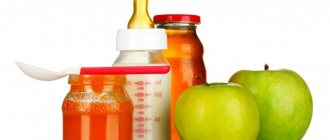The importance of following a diet during lactation
The diet of a nursing mother is based on two basic principles - the usefulness of dishes and a balanced diet. Adhering to such a diet for at least the first months after the birth of the baby will help the child’s body to improve its functioning.
The composition of the milk depends on what the young mother eats. Failure to follow a nursing diet can cause the baby to experience such undesirable reactions as:
- bowel dysfunction;
- allergy;
- colic;
- rashes and redness of the skin;
- restlessness during daytime or nighttime sleep.
When compiling a daily diet, a woman should give preference to high-quality and fresh products. Food poisoning will have a negative impact on the mother’s body, weakened after childbirth.
The following will not benefit a woman during lactation:
- strict restrictions on food. An overly strict diet for a mother in the first months of a baby’s life without good reason is not justified. The absence of undesirable reactions to various foods in mother and baby indicates the need to eat everything, but in moderation.
- binge eating. Nursing mothers often think that they have to feed for two so that the baby gets the maximum amount of nutrients. This diet contributes to excess weight gain and stretching of the stomach, without bringing any benefit.
Basic principles of menu design
When thinking through the menu of a nursing woman, you should pay special attention to the caloric content and variety of the diet. In addition, it is very important for nursing mothers to consume enough fluids.
Typically, women after pregnancy are very concerned about regaining their figure. However, nursing mothers should never go on a diet. This can change the composition of milk, or even lead to its disappearance.
Doctors recommend that breastfeeding women eat about 500-700 kilocalories more than those who are not breastfeeding.
Is it possible to lose weight under such conditions? Oddly enough, yes. But the desired effect is achieved not by cutting back on the diet, but by changing the diet. During lactation, it is necessary to eat fractionally - ideally as often as the baby. This, on the one hand, stimulates milk production, and on the other, helps speed up metabolism, and therefore, fat burning.
It is important that the diet be varied - this will ensure the full composition of breast milk. In addition, in this way the child gradually develops habits for different foods.
To reduce the risk of allergies, it is advisable to exclude from your diet foods with preservatives, flavors, dyes and other artificial additives. Potential allergens should be eaten in small quantities, with caution, and monitor the child's reaction to them. At the same time, you need to know that allergies can manifest themselves not only as redness of the skin on the baby’s cheeks. The appearance of an incomprehensible rash, crusts on the head, diaper rash or greenish stool are also possible signs of an allergy. Sometimes it can even do without such manifestations: the child simply becomes restless, screams, and spits up. In such cases, the first thing a nursing woman should do is analyze her menu and adjust it. Often this simple measure is enough to ensure that all unpleasant manifestations disappear.
The most common allergens include:
- chocolate;
- coffee;
- strawberries and other berries;
- citrus fruits (especially oranges and tangerines);
- milk;
- eggs (egg white);
- Fish and seafood;
- Exotic fruits.
However, it should be remembered that allergies or individual intolerances can occur to almost any product. Therefore, nursing mothers should include all new dishes in their diet very carefully.
It’s probably unnecessary to remind you about the need to drink a lot of fluids. During lactation, a woman's drinking needs increase. At the same time, you can not drink everything - you should give preference to clean water and green tea, but it is better to postpone strong tea and coffee until later, until the end of the lactation period.
Rules for proper nutrition
Breastfed children eat exclusively this product for the first six months of life. Milk must be balanced. It prepares the child's body for adult food. A nursing mother's menu should consist of hypoallergenic ingredients and contain a large amount of nutrients.
During lactation, the daily calorie intake in the first six months of a baby’s life should be within 2700 kcal, up to 18 months – 2600 kcal. It is undesirable to exceed this figure, because this amount is enough for a woman’s body to restore and enrich breast milk with useful microelements.
A strict diet for a nursing mother in the first months after childbirth is necessary until the baby’s digestive system begins to function normally. Violation of the principles of proper nutrition leads to undesirable reactions - spasms, gas formation or colic in the child.
A nursing mother can diversify her diet starting from the third month of her baby’s life. The menu becomes complete during this period. The baby can safely introduce himself to unknown foods; his gastrointestinal tract stabilizes by the third month.
Basic rules for women during lactation:
- Five to six meals a day with breaks of no more than 3 hours.
- You should have a snack 30 minutes before feeding your baby.
- Spicy, fried, pickled and fatty foods should be excluded from the diet.
- Establish a drinking regime.
- Eat seasonal fruits and vegetables, dried or baked.
- Exclude from recipes ingredients that cause fermentation - white cabbage, grapes, wheat bread and legumes.
- Remove carbonated drinks and kvass from your diet.
- The menu should not contain onions and garlic, as well as seasonings that change the taste of breast milk.
- Expand the range of foods consumed after 6-8 weeks, gradually introducing ingredients unknown to the baby.
Dishes for nursing mothers
A woman during lactation should eat rationally so that milk is secreted in sufficient quantities. Dishes for nursing mothers must be prepared from fish and meat. The diet should include fruits and vegetables, dairy products, and eggs.
Table of contents
|
Diet
A nursing woman should eat regularly. You need to eat at least 5 times a day.
The diet is divided into the following stages:
- 8:00 - breakfast;
- 10:00 - 2 breakfast;
- 14:00 - lunch;
- 16:00 - afternoon snack;
- 19:00 - dinner.
If necessary, a 2nd dinner can be arranged at night at 21:00.
It is not advisable to skip meals, as this will negatively affect the quality of milk.
A set of products that a woman needs
A woman’s body should receive a sufficient amount of proteins, fats and carbohydrates, vitamins and micronutrients.
The following products provide these substances:
• Meat is a source of protein, hemoglobin, and fats.
• Fish – contains phosphorus, iron, calcium, vitamin D, E and other micronutrients.
• Dairy products - kefir, fermented baked milk, milk, cottage cheese, which contain calcium, vitamin D, vitamin A.
• Butter is a source of vitamin D.
• Vegetable oil – contains vitamin E.
• Vegetables are rich in fiber, vitamins B, C, E, PP and others.
• Fruits are the main source of vitamin C and fiber.
Bakery and pasta products, cereals have carbohydrates and proteins. They form the basis of the menu.
While breastfeeding, you do not need to eat exotic fruits such as avocado, pomelo, mango.
You should not eat allergenic seafood dishes: shrimp, octopus. Citrus fruits are introduced into the diet when the baby is 3-4 months old.
How to prepare meals for nursing mothers
It is recommended to boil, stew, bake foods. This will make your meals healthier and safer.
Boiled, baked and stewed foods have low fat content and do not contain harmful carcinogens.
Breastfeeding women should not eat smoked, salty, very sweet, fried foods, or canned food. Excess salt increases the load on the kidneys and provokes hypertension.
Fried foods contain carcinogens, have a lot of fat, and are high in calories, which negatively affects the health of the baby.
Fatty foods lead to obesity and overload the child’s digestive tract.
Dishes for a nursing mother in the first months
A nursing mother’s diet should include porridge, soups, and main courses of meat or fish. Includes cottage cheese, cottage cheese casseroles, cheesecakes (baked in the oven).
Fermented milk drinks include: milk and kefir (no more than 200 ml per day), fermented baked milk, natural yogurt, snowball.
It is recommended to eat porridge for breakfast. In the first months you can eat buckwheat, rice, and corn grits.
After 2-3 months it is allowed to include oatmeal, wheat, barley, and millet. Semolina porridge should be consumed after 3 months of age.
For the first meal, you can prepare an omelette or cottage cheese casserole. For the 2nd breakfast a milk drink is offered.
For lunch, it is recommended to eat first courses (mashed soups, borscht after 2-3 months of age, cabbage soup, soups with potatoes, noodles).
Useful tips for mothers: NUTRITION FOR A NURSING MOTHER
Soups should be prepared without frying and with less salt. The broth is cooked with chicken, rabbit, turkey, and beef. Pork meat is not used for making soups in the first six months.
It is recommended to steam and bake the second dishes. You can make homemade semi-finished products from meat and fish: meatballs, cutlets, dumplings.
Allowed meat products:
- rabbit;
- turkey;
- chicken without skin;
- beef;
- veal;
- mutton.
Canned and smoked meat is prohibited. It is not recommended to eat smoked sausage. It contains a lot of additives and salt.
You can eat sea fish:
- halibut;
- cod;
- pollock;
- hake;
- mackerel
These types of seafood are the safest for babies.
River fish should not be consumed in the first six months. She is very allergenic. Smoked, salted, dried, and canned fish should not be eaten.
A side dish should be added to meat and fish dishes. In the first months, the mother is allowed to eat buckwheat, rice, pasta, potatoes, and neutral vegetables (broccoli, cauliflower, zucchini).
As the baby grows, it is allowed to introduce stewed cabbage, beets, and carrots.
It is recommended to include salads in your diet. You can eat meat, fish, vegetable salad.
Vinaigrette, tomato and cucumber salad are introduced 1-3 months after the birth of the baby. When you include carrots, beets, cucumbers, tomatoes, cabbage, they look at the baby’s reaction.
You can also eat neutral fruits: apple, pear. Dried fruits are allowed: dried apple, plum, dried apricots. Bananas are included in the diet after a month.
If the baby tolerates the fruit well, it can be eaten earlier. It is not advisable to include citrus fruits earlier than 3-4 months.
After introducing oranges and tangerines, you need to consume them little by little, observing the reaction.
It is forbidden to eat during the entire period of breastfeeding:
- coffee;
- chips, crackers with additives and a lot of salt;
- strong tea;
- salted, canned, smoked meat and fish products;
- alcohol;
- carbonated lemonade.
Prohibited in the first months:
• citrus and exotic fruits (administered after 3 months);
• peas, beans (provoke bloating, acceptable after 9 months of age in small quantities);
• fresh cabbage (after 3 months of age);
• grapes (increases colic, bloating, causes diarrhea);
• banana (not earlier than 1 month);
• beets (after 2-3 months of age only);
• carrots (after 2 weeks only in soup, after 2-3 months acceptable);
• red and orange vegetables and fruits (up to 2 months, administer carefully);
New dishes are introduced little by little while watching the child.
What to cook for a nursing mother for breakfast
Porridge is perfect for breakfast. In the first months, it is recommended to prepare gluten-free porridges: buckwheat, rice, and corn. The baby tolerates them well.
The porridge should be cooked first in water and then with a small amount of milk. The product should be served with a piece of butter.
You can make an omelet for breakfast. It is advisable to make it from 2-3 eggs and milk.
The dish is prepared in the microwave or on the stove. Cooking omelette in the microwave is convenient and quick.
A good option is cottage cheese casserole or cottage cheese. The cottage cheese is seasoned with sour cream and sprinkled with a small amount of sugar.
Cottage cheese casserole should be prepared without semolina for the first 3 months. This will prevent dyspepsia.
For breakfast, a sandwich with butter and cheese is suitable. If the baby is 3-4 months old, you can introduce cream cheese into the diet. The sandwich can be prepared with cottage cheese, apples and pears.
In the morning you can drink weak tea, dried fruit compote, and milk. Apple or pear juice is allowed.
Juices can be slightly diluted when introduced into the menu.
First dishes for a nursing mother
At the initial stage, soups are prepared with a second broth until they are 1-2 months old. They start with turkey soups. This is the most hypoallergenic meat.
After introducing turkey, it is allowed to cook with rabbit or chicken. If these broths are tolerated normally, you can try beef broth.
It is not recommended to cook soup with pork until it is 6 months old.
Mothers are allowed neutral soups. Frying cannot be added to the first course. Types of soups:
- chicken with potatoes and egg;
- beef with vermicelli;
- lean beef with cauliflower;
- puree soup with broccoli on turkey or chicken;
- fish on cod or hake with potatoes and carrots;
- with meatballs in chicken, beef broth with potatoes or noodles;
- beef with carrots, pieces of beef and pearl barley.
You can also prepare turkey soup with potatoes, carrots and onions. Borscht is introduced closer to 6 months of age. Mushroom soup can only be eaten after 2 years.
It is recommended to add rice, pearl barley or wheat, and vermicelli to soups.
You can add some carrots, potatoes, zucchini, cauliflower, herbs, onions, and black pepper.
Recipes for nursing mothers: fish, meat, side dishes
Second courses are prepared from meat and fish. Meat and fish can be baked, boiled, or stewed. They often make cutlets, meatballs, meatballs, and dumplings. Types of meat dishes:
• lasagna with minced meat;
• potato casserole with ground beef;
• homemade meatballs with rice from chicken, beef, turkey, rabbit;
• baked beef with potatoes;
• zucchini boats with minced meat;
• homemade dumplings with ground beef and sour cream;
• pasta with boiled chicken and carrots.
Suitable for breastfeeding: pasta with vegetables and minced meat, chicken rolls with cheese, chicken in cream sauce, stuffed peppers, chicken with steamed vegetables, cauliflower with meatballs baked in cream.
You can cook fish from:
• baked cod with potatoes or pasta;
• fish stew with apples;
• steamed cod with cauliflower;
• pollock baked with cheese and tomato;
• boiled tuna with spaghetti.
Fish can be cooked in a slow cooker. This saves time.
Salads
At the beginning of breastfeeding, it is recommended to eat salads from boiled vegetables, meat, and fish. This will prevent the occurrence of allergies.
As the baby grows, fresh vegetable dishes are added. Types of dishes:
• meat salad (meat, potatoes, carrots, egg, sour cream);
• fish salad (potatoes, fish, carrots, vegetable oil);
• chicken with walnuts;
• Caesar (with chicken, croutons, lettuce, cheese);
• royal night - with chicken, tomatoes, loaf, eggs, cheese;
• cauliflower with nuts and egg.
After 2-3 months, it is allowed to eat herring under a fur coat, a salad of tomatoes and cucumbers.
Fresh cabbage salad is allowed after 3-4 months of age, when colic goes away.
Sample menu for 3 days
Mom needs to eat 5 times. Menu example:
| 1 day | 2 days | 3 days | |
| Breakfast | Buckwheat porridge with apple, tea, sandwich with cheese. | cottage cheese with dried apricots, tea with sugar. | omelet with 3 eggs, tea, sandwich with cheese and butter. |
| 2nd breakfast | kefir | Ryazhenka | snowball |
| Dinner | chicken soup with eggs and potatoes, lasagna with minced chicken, apple juice, bread. | halibut soup with potatoes, meatballs with mashed potatoes, pear juice, bread | turkey soup with potatoes and herbs, steamed cutlets with broccoli with sour cream, bread, apple and pear compote |
| Afternoon snack | dry biscuits, milk | egg pie, tea | bun with butter, tea |
| Dinner | cottage cheese casserole, dried fruit compote, bread | boiled beef with pasta, bread, cookies, tea | meatballs with potatoes baked in the oven with cheese, juice, bread |
The diet should be varied. Every day it is necessary to change the set of dishes so that hypovitaminosis does not develop.
The mother's diet should include basic products: meat, fish, dairy products, bread and pasta, cereals.
Dishes should be steamed, boiled, baked. Avoid alcohol, coffee, allergenic, fatty, salty foods.
Proper maternal nutrition reduces the likelihood of food allergies, dyspepsia, bloating and colic in the baby.
- about the author
- Recent publications
Olga Kuznetsova
author of the publication (site editor)
DOCTOR - PEDIATRIC Education: Siberian State Medical University. Certificate of specialist in the specialty "Pediatrics"
Olga Kuznetsova recently published (see all)
- Is it possible for nursing mothers to eat seaweed - 03/04/2021
- When to introduce meat into complementary foods - 02/27/2021
- ARVI in infants - 02/13/2021
Secrets of properly introducing new dishes into the diet
When expanding her own menu, a young mother should be guided by three basic principles - observation, gradualism and caution. It is useful to keep a food diary, where the food, drink and reaction of the child’s body to the product are recorded.
New ingredients are introduced every 2-3 days, one at a time. This principle makes it possible to accurately determine which product the baby’s body reacted negatively to. If an allergic component is identified, you must stop using it for at least 30 days.
An ingredient unknown to the baby should be introduced into the diet of a nursing mother in the first half of the day. The portion increases gradually, while the mother carefully monitors the reaction of the child’s body.
Children's doctors suggest eating a variety of foods. Pediatricians will tell you what you can eat and in what quantities, and will give you nutrition tables for a nursing mother, taking into account the age of the baby.
A correct and balanced menu helps maintain a woman’s health and the full development of the baby. Breastfeeding lays the foundation for a child’s immunity, affects his mental development and his tendency to develop allergic reactions in adulthood. Therefore, pediatricians and nutritionists advise mothers to draw up a detailed nutrition plan, focusing on the table for the months of the baby’s life.
List of permitted products
Nutrition tables for nursing mothers detail the ingredients that can be included in food by month. Nutritionists and pediatricians allow the following:
- wheat bread made from second-grade flour, rye crackers, biscuits with a minimum amount of sugar, drying;
- a variety of cereals, steam puddings, cottage cheese casseroles;
- white poultry and fish meat - hake, pollock, cod, rabbit, chicken, turkey, veal;
- vegetarian soups and stews with a “second” broth. When preparing first courses, you should give preference to cauliflower, potatoes, zucchini and carrots;
- seasonal fruits. It is better to start introducing it into your diet with a green apple. Nursing mothers can replace fruits and supplement the diet with juices and purees intended for baby food;
- fresh and boiled vegetables - carrots, beets, pumpkin, zucchini, zucchini;
- dried fruits are especially useful if the baby suffers from constipation;
- fermented milk products – natural yogurt without additives, kefir, fermented baked milk, yogurt, acidophilus;
- healthy sweets - marshmallows, marshmallows, meringues, marmalade without chemical additives;
- vegetable (olive, sunflower) and butter;
- herbal infusions, weak teas, weak coffee, still water, homemade fruit drinks and compotes.
Products to limit or exclude
There is no place in the diet of a nursing mother:
- highly allergenic foods - nuts (except walnuts), seafood, red fish, chocolate, honey, orange and red fruits, caviar, crayfish and cocoa;
- dishes and drinks that promote fermentation in the intestines - legumes, whole milk, kvass, yeast dough;
- products with essential oils - citrus fruits, radishes, garlic, onions, radishes and celery;
- fatty varieties of fish and meat, rich broths, smoked meats, marinades, spicy dishes, spices;
- tropical fruits (bananas are an exception);
- fermented cheeses, sour cream with a high percentage of fat;
- pastries and cakes with cream;
- energy drinks, carbonated drinks and alcohol.
During lactation you should limit your food intake:
- whole milk - it can be diluted by half with water when cooking porridge;
- bread and baked goods made from first and highest grade flour;
- sugar and chemical sweeteners;
- salt;
- confectionery and unhealthy sweets.
What can't you eat for breakfast?
A nursing woman must remember that everything she eats will somehow end up in her milk. Therefore, all products to which the child is (or even may be) allergic are prohibited. Drinking alcohol is strictly prohibited. Coffee for breakfast is a classic, but nursing mothers will have to abstain from their favorite drink until the end of lactation. It is better to avoid hot spices. Many babies do not like the taste of onions or garlic - it is likely that a nursing mother will have to refrain from eating such products.

During lactation, it is undesirable to eat dishes containing large amounts of coarse fiber. These are, first of all, dishes made from cabbage and legumes. Such food can cause colic in infants. You also need to be careful with sweets - consuming them can also cause stomach pain in children.
If a child is allergic, the list of prohibited foods increases. Moreover, nursing mothers should not only eat foods to which the baby has a pathological reaction, but also other potential allergens.
In most cases, there is no need to strictly limit yourself. It is enough to give up artificial products with harmful additives, caffeine-containing products, allergens, alcohol and legumes. Otherwise, it is enough to follow standard recommendations for a healthy diet. A moderately dense, tasty and unboring breakfast is a great start to the day that will bring joy to mother and child.
Features of nutrition in the second year of a child’s life
After the first year, the mother’s diet gradually returns to her usual. The list of permitted products has expanded so much that you can easily select recipes for delicious and healthy dishes. A nursing mother should give up alcoholic drinks and energy drinks. There is no need to rush into introducing new products.
The diet should remain complete and balanced. The basis should be based on ingredients familiar to the child’s body. The menu compiled for the first year had a positive effect on the health of mom and baby, so pediatricians do not recommend radically changing it.
Diet for mothers who want to lose weight
For women who breastfeed their babies, emergency weight loss measures are completely unsuitable. Excessively strict restrictions on food, especially in the first six months of a baby’s life, often lead to such consequences as:
- sudden gain of extra pounds;
- loss of skin elasticity;
- deterioration of general condition;
- loss of milk;
- leaching of calcium from the body;
- depression, emotional discomfort;
- deterioration of the condition of nails, hair and teeth.
Those who want to lose weight must adhere to the following rules:
- exclude fried/fatty/salty/smoked foods from the diet;
- not to starve;
- limit consumption of fast foods;
- saturate your daily menu with healthy dishes.
A nursing woman should eat frequently, but consume no more than 150 grams per meal. This rule will help you avoid weight gain. In the struggle for a beautiful figure, do not forget about your own health.
What foods should breastfeeding women eat for breakfast?
So, in the morning you can indulge in almost all your favorite foods. At the same time, you should strive to ensure that your breakfast contains proteins, “slow” carbohydrates, fiber and a small amount of fat. For example, you can eat a sandwich made from grain bread with cheese and snack on it with an apple. Or you can prepare a bowl of oatmeal with a banana or other fruits, and wash the porridge with milk. A little cottage cheese with fruit and oatmeal cookies is also a great option. Or maybe eat a boiled egg, a slice of black bread and some vegetables?
It’s also good to drink tea with milk in the morning - it is believed that this drink promotes milk production in women. You can come up with a lot of options for a breakfast menu if you want. You just need to listen to the needs of your body, do not forget about common sense and carefully monitor how this or that new product affects the baby’s health.
If there are no housekeepers, then it is better to choose dishes that are easy to prepare. It doesn’t take much time to prepare a sandwich, the eggs also cook in a matter of minutes, and the porridge is easy to prepare. In any case, the menu should be varied: you should not eat only rolls, citing lack of time - such a diet will not benefit either the mother or the child.
It is imperative to ensure that every meal of a nursing mother, including breakfast, contains a sufficient amount of protein. A nursing woman should consume approximately 2 grams of protein per kilogram of weight per day, and it is desirable that these proteins be of animal origin. Low-fat meat, poultry, fish and eggs (if you are not allergic to these products). Dairy products, due to their high protein content, will help a woman recover quickly after childbirth and increase the nutritional value of breast milk.
Suitable menu for losing weight
| Day | Drinks and dishes |
| first | chicken egg and green tea rice soup with lean meat broth millet porridge with milk boiled potatoes and steamed chicken cutlets |
| second | cottage cheese casserole with sour cream, herbal flavor boiled rice with baked meatloaf vegetable soup homemade berry juice vegetable stew buckwheat porridge on water |
| third | buckwheat pancakes and weak coffee chicken noodle soup boiled potatoes with rabbit meat green tea |
| fourth | Oven-cooked omelette and green tea fresh fruits and berries milk rice porridge vegetarian soup boiled rabbit meat cheese and fermented baked milk |
| fifth | blueberry jelly steamed beef cutlets millet porridge with milk chicken soup cottage cheese with sour cream herbal tea with savory bun |
When creating a menu, it is important to remember that the health of the baby depends on the condition of the nursing woman. Mom needs to carefully monitor not only compliance with dietary rules, but also the freshness and quality of the products used, the cleanliness of the dishes, and the correct choice of cooking method.
An example of a weekly menu for a nursing mother on a protein diet
Let's now look at a sample menu for seven days for a nursing mother on a protein diet. If desired, you can make minor changes to it, for example, replacing one type of meat with another or making adjustments to the list of vegetables and fruits.
There should be strictly six meals, as this will avoid the feeling of hunger and protect you from overeating.
First day
- A piece of rye bread and a glass of kefir;
- A serving of rice porridge without oil and sugar;
- About 200 grams of boiled veal or turkey;
- A serving of fresh vegetable salad;
- A serving of fresh vegetable salad;
- A glass of kefir.
Second day
- A glass of tea and a cracker;
- About 150 grams of unsweetened cottage cheese;
- About 200 grams of boiled turkey and stewed vegetables;
- About 150 grams of rice and 1 apple;
- A serving of fresh vegetable salad;
- A glass of juice of your choice.
The third day
- A glass of tea and a cracker;
- About 150 grams of boiled veal or rabbit;
- About 150 grams of rice and 100 grams of stewed or boiled fish;
- Apple;
- A serving of fresh vegetable salad;
- A glass of juice of your choice.
Fourth day
- A glass of kefir;
- About 200 grams of boiled veal or turkey;
- A serving of vegetable soup in vegetable broth with a piece of rye bread;
- About 200 grams of rice;
- About 100 grams of boiled fish and fresh vegetable salad;
- A glass of kefir.

Fifth day
- A glass of tea and a cracker;
- A portion of vegetable stew;
- About 200 grams of boiled fish and boiled potatoes without oil;
- A serving of vegetable salad;
- About 150 grams of boiled veal or turkey;
- A glass of kefir.
Sixth day
- A glass of tea and a cracker;
- Boiled quail eggs 6-8 pieces;
- About 100 grams of boiled meat of your choice and a portion of rice;
- Pears or apples 2-3 pieces;
- About 100 grams of boiled fish and 100 grams of rice;
- A glass of juice of your choice.
Seventh day
- A glass of tea and a cracker;
- About 100 grams of boiled veal and a piece of rye bread;
- About 100 grams of rice and a portion of fresh vegetable salad;
- A serving of fresh vegetable salad;
- About 200 grams of boiled veal, rabbit or turkey;
- A glass of kefir.
A similar protein diet during breastfeeding lasts a week and is carried out no more than once every three months. Its more frequent use can lead to problems with the digestive system, as well as aggravation of the woman’s general health.
Recipes for healthy dishes for nursing mothers
When choosing a diet, it is important to pay attention to the individual reaction of the child’s body to one or another component.
Curd dessert

For preparation you will need:
- 2 glasses of milk;
- 30 g gelatin;
- 500 g low-fat cottage cheese;
- 150 g sour cream 15-20% fat;
- 200 g sugar;
- 3 bananas.
Cooking process:
- Pour gelatin into a saucepan, add milk, leave to swell.
- After 20 minutes, place the container on low heat, stirring constantly, and heat the mixture.
- Remove from stove and let cool.
- Mix cottage cheese, sour cream and sugar thoroughly.
- Cut bananas into pieces.
- Mix the curd and milk-gelatin masses.
- Pour the mixture into the mold in small portions, then lay out a layer of bananas.
- Repeat until ingredients are gone.
- Cover the container with film and place in the refrigerator for at least 8 hours.
Pie with berries

To prepare take:
- 200 g butter;
- 3 chicken eggs;
- 150 g sugar;
- 1 tsp. baking powder;
- 1.5 tbsp. flour;
- 150 g of fresh or frozen berries (cherries, currants, blueberries).
Cooking process:
- Melt the butter.
- In a separate container, beat sugar and eggs.
- Add flour and baking powder, pour in oil.
- Replace the dough and pour onto a baking sheet greased with butter.
- Sprinkle berries on top.
- Preheat the oven to 200 degrees.
- Place the pie in the oven for 35-40 minutes.










